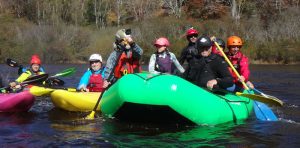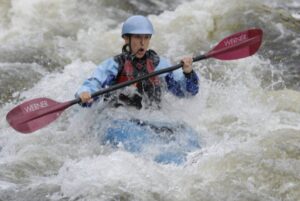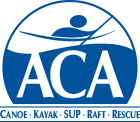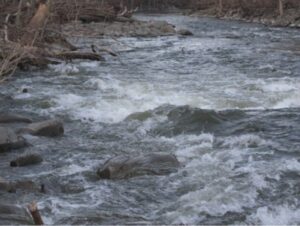 So you have been whitewater rafting with your friends, seen some folks bopping down a river or you’ve been paddling flat water and want more of a challenge… you want to jump in one of those little plastic things and whitewater kayaking!
So you have been whitewater rafting with your friends, seen some folks bopping down a river or you’ve been paddling flat water and want more of a challenge… you want to jump in one of those little plastic things and whitewater kayaking!
First off, KCCNY has what you need to get started with loaner gear, winter pool sessions to learn basic handling and up and, in season, beginner trips and instruction. During the winter you could literally just sign up for a pool session and give paddling in a whitewater kayak a shot. In season, many folks try our raft to get a sense of what they are getting into…
but if you’d like to learn more….
Welcome to the World of Whitewater Paddling! While learning to kayak can be challenging and a little scary at times, if you stick with it, you will be rewarded with access to incredible places, an amazing community, and a whole lot of fun and excitement. Whether your goal is running waterfalls, paddling in remote places, tricks like loops or spins, racing slalom or simply enjoying a relaxing paddle down your local class ‘fun’ run, the paddling community is here to offer you encouragement, advice and to chase down your boat whenever you swim.
The following is a compilation of the most commonly asked questions by people new to paddling.
You will see in my answers tend to go the conservative route. You will find that many people “jumped right in” and things turned out fine for them. However, I have also seen people go too hard too fast. They buy full sets of gear, only to replace it all within a season because it didn’t fit right, the boat was too tippy, the boat was too stable or they decide paddling isn’t for them and leave the sport entirely. I have also seen paddlers pushed to try harder rivers than they are ready for. When things don’t go well, it results in lost gear, scrapes, bruises and a loss of confidence. Occasionally, it results in some really scary situations, because as you will learn, water is incredibly powerful. So know yourself, listen to your gut and don’t be swayed by a good deal or a paddler that isn’t looking out for your best interest.
 Also a hardshell kayak isn’t the only way to get into whitewater.There’s no denying that the best way to learn whitewater at a harder level is in a hardshell. But if you’re just starting out in whitewater, I think an IK (inflatable kayak) or packraft is a great way to learn the ropes. They are extremely stable in easy water but get unstable in bigger, dynamic water. Read more about inflatable kayaks.
Also a hardshell kayak isn’t the only way to get into whitewater.There’s no denying that the best way to learn whitewater at a harder level is in a hardshell. But if you’re just starting out in whitewater, I think an IK (inflatable kayak) or packraft is a great way to learn the ropes. They are extremely stable in easy water but get unstable in bigger, dynamic water. Read more about inflatable kayaks.
OK, on to the questions on whitewater kayaking:
1) What is the best beginner boat/What boat should I get/ “Hi, Anyone have any boats for sale”?
-
- First, KCCNY has loaner equipment. Nothing state of the art, but good stuff to get you started.
- Be aware that if you post “I’m looking to buy a boat” on Facebook, many folks will try to sell you whatever boat is collecting dust in their garage. It is far better to post the specific boat(s) and size you are looking for, your price range, and how far you are willing to travel. And then DON’T be tempted to jump on the first boat someone posts.
- If you see a boat you like online, ask if you can meet up at some water (flatwater is better than no water), rather than only sitting in it on dry land. Remember that well placed foam can make a big difference in boat fit. Also, consider the clothing you typically wear, especially if you plan to paddle in cold weather. Whitewater kayaks can be incredibly comfortable, so don’t feel you have to force yourself into a boat. Later if you start doing tricks, discomfort might be a tradeoff for performance, but for starters, you don’t want a short or low-volume boat. You’ll be sitting in the boat for hours so you should be comfortable.
Try to get a friend to advise that knows something about whitewater kayaking and used equipment. Not only do you have to know whether what you are buying the right stuff but used boats and paddles will be scratched. Paddlers speak of oil canning which is when the boat is getting worn enough that it’s starting to deform and, obviously, cracks or holes that go a the way thru the boat are bad.
Still, if the price is right (like really right) a leaky but otherwise good boat can be an acceptable choice.- There is no such thing as the “best beginner boat”. Boat fit, both physical fit, and style, will be an individual decision for each person. Before you buy a boat, try many different boats. You can do this by joining a paddling club, renting/demoing through an outfitter or befriending some paddlers (we’ve all got spares, see next point).
- While most paddlers eventually end up with a fleet of boats for each of the different styles of paddling (and their mood for the day), beginner paddlers will want a boat that they can comfortably use for at least their first few seasons.
- Your first whitewater boat will need to not only fit you well physically (and every single boat fits just a little bit differently), but also fit with the type of paddling you want to be doing, your athletic ability/fitness level, comfort with water and your budget. Many of these things you just can’t know until you have spent time paddling, so don’t rush to buy a boat. Beg and borrow for as long as you can!
 Playboat vs. Creekboat: Some will argue that play-boats make the best beginner boats because they will keep you from developing bad habits. They do this because every time you make a mistake (like cross an eddy-line on the wrong edge), you will flip or get close to flipping, and you get the immediate feedback of “oh, I shouldn’t do that.” While some people (typically, young, fit, and not afraid of swimming) do just fine with this method of learning, others quickly get frustrated and demoralized. Many find that creekboats or river runners make better beginner boats because they are more comfortable and more stable, so you won’t be constantly worried about flipping and can focus on your technique and just enjoying the river…this is supposed to be fun remember!
Playboat vs. Creekboat: Some will argue that play-boats make the best beginner boats because they will keep you from developing bad habits. They do this because every time you make a mistake (like cross an eddy-line on the wrong edge), you will flip or get close to flipping, and you get the immediate feedback of “oh, I shouldn’t do that.” While some people (typically, young, fit, and not afraid of swimming) do just fine with this method of learning, others quickly get frustrated and demoralized. Many find that creekboats or river runners make better beginner boats because they are more comfortable and more stable, so you won’t be constantly worried about flipping and can focus on your technique and just enjoying the river…this is supposed to be fun remember! 
- But really, What boat should I get? Ok, ok! Get enough length that the boat won’t flip easily front and back and sharp enough edges that you can engage them. Many boats come with a range of recommended paddler weights…beginners should in the low-middle of that range. And paddler weight is overall weight, including pfd, helmet, clothes, even that water bottle.
Some tried and true beginner boats are: Dagger Mamba, Jackson Zen or Nirvana, Jackson’s Fun series (with the paddler at the lower end of the weight range for each size), Pyranha Burn, and WaveSport Diesel. Lots of older boats can be gotten for less. You’ll sacrifice comfort and adjustability more then performance at this point in your career.
2) What gear do I need to get into Whitewater kayaking?
- The “5 essentials”: PFD (aka “life jacket”), whitewater specific helmet, paddle, sprayskirt, and boat. It’s a big investment just to get the most basic gear…rent and borrow for as long as you can to avoid buyers remorse (and maxing out your credit card). *As you purchase gear, make sure to put your name and phone number on EVERYTHING!* Expect to pay:
- ~$300-600 for a used, good condition boat. New boats are typically in the $900-1700 range. Just like a good new car, new boats depreciate pretty fast and then hold steady, so if you buy used, you sometimes can sell a used boat for close to what you paid (but don’t count on it unless you have a savvy friend helping your).
- ~$100-300 for a new entry level paddle (spring for the fiberglass blade if you can.
- ~$50-250 for a new helmet. This is your head we are talking about, so if you buy used inspect carefully for cracks, flat spots, etc. When you are first starting out you are more likely to hit your head as you you’ll flip more often and won’t have the tuck and roll reaction that experience tends to hardwire into kayakers. A full face isn’t a bad idea as well as the tuck when you flip is learned, not instinctive.
- ~$75-150 for a new pfd. Used pfds can often be had. Sun fades pfds and deteriorates the fabric which means it won’t be as strong as intended in a high stress situation. Tight fit is key.
- ~$80-120 for a new sprayskirt or about 1/2 that for a used but not beat sprayskirt. As a new paddler that is probably going to swim and get wet anyway, an entry level sprayskirt or a leaky used skirt is a good way to save some $. Do get neoprene over a nylon one though!
- ~$50 for float bags…they really should be considered one of the 5 essentials as we’re all between swims. Standard float bags . If you can’t afford float bags fill that back of the boat with something that floats as it will make it a lot easier for others to rescue your boat. Bladders from Dunkin’s box of coffee, wine box liners or anything else you can jam in there that won’t come out or break even if it gets worked in whitewater.
- Sometimes you can get lucky and someone might be wanting to sell you a ‘package deal’ because they are getting out of the sport. This can be a great value, but do be wary of used pfds and especially helmets . It can be really hard to tell if they have internal damage that would compromise your safety.
- Other gear you will likely need to purchase:
- Footwear: River booties are most common. River sneakers such as the Astral brewer are nice. Cheap water shoes from Walmart, low profile old sneakers, or sandals with a heel strap such as Chacos, Keens or Tevas also work. Toe protection is nice and they have to be able to stay on in the worst swim you can imagine.
You always want to be thinking “could this trap me in my boat?” Laces and shoes with thick soles pose a bigger risk than a low profile, smooth bootie. - Nose plugs: very helpful when to keep water out of your nose when you’re upside down.
- Small drybag for storage in your boat. Never put your car key here! Include extra clothes for all but the shortest trip. Weather changes and unexpected swims happen.
- Rack system and/or straps to tie down your boat on your car. (You do have a car, right? Sadly whitewater paddling pretty much requires a vehicle, though a few intrepid folks get by with small boats, rentals or friends).
- Whistle attached in a way that it is easily accessible. 1 blast to get attention, 3 or more for an emergency.
- River Knife: Used to cut ropes or other gear in case of entrapment, but usually to spread peanut butter. Should be considered essential gear as you get into harder rivers where someone might throw a rope to rescue you and you might get entrapped in the rope.
- Footwear: River booties are most common. River sneakers such as the Astral brewer are nice. Cheap water shoes from Walmart, low profile old sneakers, or sandals with a heel strap such as Chacos, Keens or Tevas also work. Toe protection is nice and they have to be able to stay on in the worst swim you can imagine.
- Other gear to bring on the river:
- Non-cotton clothing: Most people find that wearing just a bathing suit leaves them open to chafing and sunburns. Consider the conditions for the day and how cold you typically get. A bathing suit or synthetic underwear paired with athletic/synthetic clothes is typically fine for a warm summer day. Whitewater kayaking is a wet sport and many of the river we paddle on even in the summer are cold, so thin neoprene top is often nice. It’s easier to splash water on yourself (or roll) if you are to warm, but hard to get warm if you are cold. The key is to avoid cotton and always dress for the swim!
- Water and Snacks
- Sunscreen and chapstick (but never let sunscreen touch latex gaskets on dry gear).
- Extra contacts if you wear contact lenses or croakies (glasses strap) if you wear glasses (string works in a pinch).
- Any medication you might need on the water such as an epi-pen or inhaler (ideally these should be in your pfd so if you swim you have access to them). Obviously let the group if you have these or other medical conditions such as diabetes so they know how to respond if something happens.
 Goggles or snorkeling masks for when you are learning to roll.
Goggles or snorkeling masks for when you are learning to roll.
- Gear to purchase “down the line”
- Paddling gear bag: usually mesh on top, great for keeping gear from getting lost in shuttle vehicles and makes you less likely to forget something.
- Paddling specific clothing: paddling shirt/rashguard, wetsuit, splash top or drytop, drysuit. (Notice how this goes from most wet to least wet…also least to most expensive)
- Cold weather gear: such as a drysuit, poggies/gloves, thick base layers.
- Rescue gear to purchase after you’ve learned how to use it (or are about ) by taking a swiftwater safety course or being trained by experts :
Throwbag: this is a bag containing 50-70’ of rope that is used in certain rescue situations. More advanced are rescue pfd, various pulleys and webbing straps.
3) What types of whitewater paddling are there?
- River running: Traveling down river, catching eddies, surfing waves as you go. A typical day may cover 4-15 miles. This is what the vast majority of weekend warriors in New England do.
- Creeking: These are narrow, rocky, shallow and/or very steep rivers that may include waterfalls. This is probably what you have seen on YouTube.
- Playboating: Staying at one “feature” in the river and doing tricks such as spins and loops (front flips). There is usually an eddy (calm spot of water) adjacent to the feature to allow the paddler to take several turns by catching the eddy and paddling back up to the feature. Features known as “park and play spots” allow you to walk down to the river from your car, play at the hole until your heart’s content and then walk back to your car, no shuttle needed.
- Other types of paddling include slalom racing, downriver or wild-water racing and squirt boating (look it up…it’s a niche sport within a niche sport).
4) What boats are associated with each type of paddling?
- River runner: Jack of all trades.Examples: Jackson Zen, Wavesport Diesel. True river runners are less bulbous then creekers allowing them to punch thru bigger features.
- Creekboats: Bigger volume, most stable, have a rounded bottom and significant “rocker” designed to be able to turn quickly and avoid getting stopped by holes: examples: Dagger Mamba, Jackson Karma, Pyranha Machno
- Creeky River runners: Stable but a little longer and narrower, so they are faster and surf better: examples: Pyranha Burn, Pyranha 9r, Jackson Nirvana,
- River play: Intended for traveling down river (unlike a true playboat), but designed for surfing waves on the fly, stern squirting and doing other “downriver tricks”.Examples: , Jackson Fun, WaveSport Fuse.
And a bit about less beginner friendly boats:
- Half-slices with a creekier front end and narrow back ends like Mullet, Dagger Axiom, Pyranha Ripper and Jackson Antix, are a new fun combo that can be squirted but still have the beef to get you down harder stuff (Pro-tip: Learn to squirt before hitting hard stuff with these as you will be squirted, so you better be able to control it).
- Playboat: Intended for playing in a wave or hole, though many use them downriver. They are designed for tricks and are the least stable of the types of boats listed. They also will have a very flat or “planing” hull. Examples: Jackson Rockstar, Dagger Jitsu, Pyranha Jed.
- Full Slice kayaks are longer with low volume on both ends which allow for a variety of tricks.
- “Old school boats”: tend to be either a) long and pointy and similar to today’s slalom boats such as the Perception Dancer, Pirouette, Dagger RPM, Sabre or b) small and slicey, and made for doing down river tricks such as the Riot Slice, Booster or Wavesport XXX. Many modern boats are updates to these classics. These are typically not a good choice for a new paddler (even though everyone paddled them back in the day).
- Other boat categories: Squirt boats, Slalom boats, sit on top kayaks (also a good entry point for some paddlers (there are whitewater specific SOTs), Canoes (both open and closed), Rafts and Paddlecats (aka catacrafts or shredders, these are a good option if you like rafting but want something a little sportier). Crossover boats also hit the market a few years ago. Often these have a whitewater hull design with a drop down skeg to help with tracking straight on flat water. These boats are can great for tripping, particularly stretches of river that have whitewater and flatwater in the same trip. But for most people having a dedicated flatwater boat and a whitewater boat will lead to a more enjoyable time for both sports.
5) How can I get started whitewater paddling.
In the winter, get thee to a pool session and learn to roll as well as control your boat. After several sessions you should make some progress and meet some folks to paddle with come spring.
In the summer, go on a beginner trip such as the Delaware or even learn how to paddle your boat on flatwater.
The best, safest but not cheapest way to learn fast is to take a professional lesson. Zoar in north central Massachusetts and Ottawa Kayak School in Canada are excellent.
6) How can I get better at Whitewater Kayaking?
- Spend more time in the water. Try lots of different rivers, try different boats, paddle with different groups of people. Take new lines, play follow the leader, BE the leader, surf, see how slow you can go by catching all the eddies. Offer to teach someone new or show them your local river. Head to a pond and work on your forward stroke.
- If you are just getting started, have a specific thing you want to work on (e.g. rolling) or feel like you have plateaued, you may consider seeking out formal instruction. There are several options, each with its advantages and disadvantages. What works for you will be different than what works for someone else.
How Dangerous is Whitewater Paddling
Well, people do die. Most are either inexperienced paddlers not taking proper precautions or using proper equipment like helmets, pfds and adequate clothing or, on the other end, good paddlers going into dangerous places….but water has the power to kill.
2 big exceptions that kill properly equipped white water paddlers on easier rivers are :
- Foot Entrapment: Standing in fast water that’s deeper then your arms are long can allow your feet to get trapped between rocks or in cracks on the bottom. The water can force you forward and down, pinning you under water. The key to being safe swimming in fast water is on your back with feet up and forward. When water slows or a fellow paddler offers you one end of their boat you transition to your front by rolling over on your side, not swinging your legs below you.
-
Strainers are trees or anything else. that allows water to pass thru but stops kayakers similar to the kitchen spaghetti strainer. Most commonly wood will lie across the river and people running into it will be caught and forced underwater. Avoid wood and other obstructions that might be funneling water under them.
1) Learn from someone who knows what they are talking about.
There are a variety of excellent kayak instruction outfits, with Zoar on the Deerfield being the best local option. Kayak and Canoe Club of New York frequently offers instructionals with American Canoe Association certified trainers as well as partial scholarships to help members get and stay certified if the teach. Pool sessions are a great way to get started as with some perseverance you can hit the whitewater with good boat control skills and a roll.
2) Buy used initially to see what you like, and then spend the bucks for the right gear once you’re educated on the sport.
While it’s nice to jump in and have sweat gear, it may be helpful to get a “starter” boat and gear, and dial in exactly what it is that interests you in the sport. Of course, if you can afford new hit up a good whitewater kayak dealer which are few and far between in our area. Again, Zoar Outdoor on the Deerfield is the leader.
Kayaking has a myriad genres – slalom, extreme, playboating, squirt boating, river running… and each one is appealing to different folks. Once you figure out exactly what you want, spend the extra money and get the gear that specializes in that. Expect to pay around $600 for the initial used gear, and maybe close to $2000 for the nicest new setup.
Once you’ve bought that equipment, you’re set! No lift tickets in this sport; just drive to the river and put on.
3) Practice your rolls!
The ‘Eskimo’ roll is the single most important skill for the beginning whitewater kayaker. Until you have that dialed, you will be swimming out of your boat every time you flip, and your gear will go everywhere in what we refer to as the “yard sale.” (Tie everything with short ropes to you or boat. Try to hang onto your paddle if you do swim. You should be able to get out on your own).
Learn the correct technique for rolling your boat upright and then practice, practice, practice. You want this to become second nature. Rolling itself can be a lot of fun.
But no shame if you can’t get the Eskimo roll….though consider a sit on top, raft or duckies.
4) Join a local paddling community.
There are many excellent clubs to network and meet other paddlers. These clubs host presentation nights, video premieres, and group trips. This is the next step after the initial instruction phase. Once you are paddling confidently in these clubs, you may also split off and paddle with a couple of individuals who are at the same skill level and have the same goals as you. Don’t forget to pay it forward once you are at that level. The experts giving up their knowledge to beginners is what makes clubs such a valuable thing. If you are a college student, you have a leg up on this – some schools have excellent paddling programs. Obviously we’re pushing the Kayak and Canoe Club of New York but there are a slew of others. South of us is Philly Canoe Club, west of us is Lehigh Valley Canoe and Kayak Club, northeast of us is Merrimack Valley and of course the Appalachian Mountain Club is nearly everywhere.
5) Run a slow progression of difficulty in rivers as you improve.
In our New York City area this means….
 Lehigh River offers scheduled whitewater releases during most summer weekends and with it’s profusion of class 2 rapids is a great training ground. Don’t be dismayed (or made over confident) by the class 3 rating promoted by the rafting companies. The Lehigh is classic class 2 and many consider it the benchmark of class 2 at normal release level. There’s more then 25 beautiful miles almost entirely protected by State Park. The dam to White Haven is mostly flat-water with a few rapids and without the crowds. White Haven to Rockport has the most rapids/mile so is most popular for training and teaching. Rockport to Glen Onoko has longer flat-water sections but gets into the deepest part of the gorge. Glen Onoko to Bowmanstown is a bit easier and is used as a training ground by Northeast PA Kayak School.
Lehigh River offers scheduled whitewater releases during most summer weekends and with it’s profusion of class 2 rapids is a great training ground. Don’t be dismayed (or made over confident) by the class 3 rating promoted by the rafting companies. The Lehigh is classic class 2 and many consider it the benchmark of class 2 at normal release level. There’s more then 25 beautiful miles almost entirely protected by State Park. The dam to White Haven is mostly flat-water with a few rapids and without the crowds. White Haven to Rockport has the most rapids/mile so is most popular for training and teaching. Rockport to Glen Onoko has longer flat-water sections but gets into the deepest part of the gorge. Glen Onoko to Bowmanstown is a bit easier and is used as a training ground by Northeast PA Kayak School.Lackawaxen west of Port Jervis is an easy class 2 with numerous summer Friday scheduled releases.
Two popular and more advanced playspots on the Delaware.
Near Trenton is the Lambertville Wing Dam which provides a nice training ground for intermediates learning to move around holes.
Even nearer Trenton is Scudders Falls, the remains of old dams that provide a great surfing and practice wave. At optimal levels it’s populated with expert playboaters working on advanced tricks like loops where they launch completely out of the water and do a full flip, Scudders and most play waves are great places to learn boat control, surfing and, when things don’t go as planned, work on a roll in moving water with low consequences.
I hope that is helpful to you beginner and intermediate paddlers! It truly is an incredible sport, and please don’t blame me if it becomes a crippling addiction that supersedes other priorities in your life! Kayaking tends to do that.
See you on the river.
This page used work (with permission) by Mary Nitschke of the Where’s the Whitewater at FaceBook page as a starting point. We made significant changes so please address your complaints, ideas and criticism to KCCNY.org and Tom Hart. Original article on google docs.





 Try to get a friend to advise that knows something about whitewater kayaking and used equipment. Not only do you have to know whether what you are buying the right stuff but used boats and paddles will be scratched. Paddlers speak of oil canning which is when the boat is getting worn enough that it’s starting to deform and, obviously, cracks or holes that go a the way thru the boat are bad.
Try to get a friend to advise that knows something about whitewater kayaking and used equipment. Not only do you have to know whether what you are buying the right stuff but used boats and paddles will be scratched. Paddlers speak of oil canning which is when the boat is getting worn enough that it’s starting to deform and, obviously, cracks or holes that go a the way thru the boat are bad.